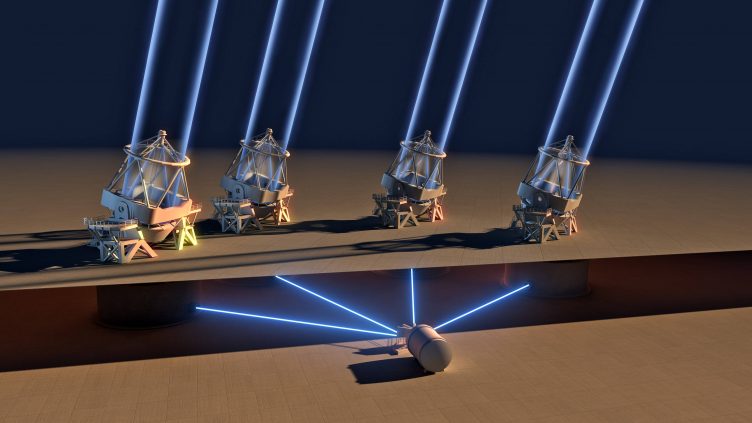Website:
http://obswww.unige.ch/Instruments/espresso/the-instrument/
Coordination:
PI: Francesco Pepe (Observatoire de l’Université de Genève, Switzerland)
Co-PI: Nuno Santos (IA, Portugal), Rafael Rebolo (IAC, Spain), Stefano Cristiani (INAF Trieste, Italy)
Portuguese scientific participation:
Co-PIs: Nuno C. Santos
Chair of the Science team: Sérgio G. Sousa
Co-Investigators: Vardan Adibekyan, Pedro Figueira, Carlos Martins, Nuno Santos, Sérgio Sousa
Collaborators: Susana Barros, Olivier Demangeon, João Faria, Hugo Tabernero
Funding:
a Generation of Earth-ANalogs Exploration Spectrographs (G.EANES), references: COMPETE2020: POCI-01-0145-FEDER-032113 & FCT: PTDC/FIS-AST/32113/2017
Partners:
The institutions involved in the design, the manufacturing, the installation or the scientific exploitation of ESPRESSO and the GTO are: Observatoire Astronomique de l’Université de Genève (project head, Switzerland), Centro de Astrofísica da Universidade do Porto (Portugal), Faculdade de Ciencias da Universidade de Lisboa (Portugal), INAF-Osservatorio Astronomico di Brera (Italy), INAF-Osservatorio Astronomico di Trieste (Italy), Instituto de Astrofísica de Canarias (Spain), Physikalisches Institut der Universität Bern (Switzerland), Instituto de Astrofísica e Ciências do Espaço (Portugal), Departamento de Física e Astronomia, Faculdade de Ciências, Universidade do Porto (Portugal), Departamento de Astrofísica, Universidad de La Laguna (Spain), Consejo Superior de Investigaciones Cientícas (Spain), Centro de Astrobiología, Madrid (Spain), Fundación G. Galilei – INAF – La Palma (Spain), European Southern Observatory, Vitacura(Chile), European Southern Observatory, Garching (Germany), INAF – Osservatorio Astrofisico di Torino (Italy), INAF – Osservatorio Astronomico di Palermo (Italy), Institute for Fundamental Physics of the Universe, Trieste (Italy), Centre for Astrophysics and Supercomputing, Swinburne University of Technology, Hawthorn (Austria).
ESPRESSO is a high-resolution, ultra-stable spectrograph designed and built by a consortium of 69 scientists from four countries, Switzerland, Portugal, Spain and Italy. The European Southern Observatory also participated as an associated partner. ESPRESSO is now installed at the ESO-Paranal observatory in Chile at the focus of a combined-Coudé train. This Coudé train has been designed, build and installed by the Portuguese members of the ESPRESSO consortium. It allows ESPRESSO to collect light from any of the four Very Large Telescopes (VLT) of the Paranal observatory, or by these four VLTs at the same time. ESPRESSO saw its first light on November 27th, 2017 around 21:30 local chilean time.
As a result of its efforts, the ESPRESSO Consortium was awarded 273 nights of guaranteed time observations (GTO). This time is currently exploited by the ESPRESSO science team, composed of 26 Co-Is and 22 collaborators, with four main scientific objectives:
- The detection of rocky planets in the habitable zone of their host-star;
- The characterization of transiting rocky planets, their formations and evolution processes;
- The study of exoplanetary atmospheres;
- The study of the variability of fundamental constants.

